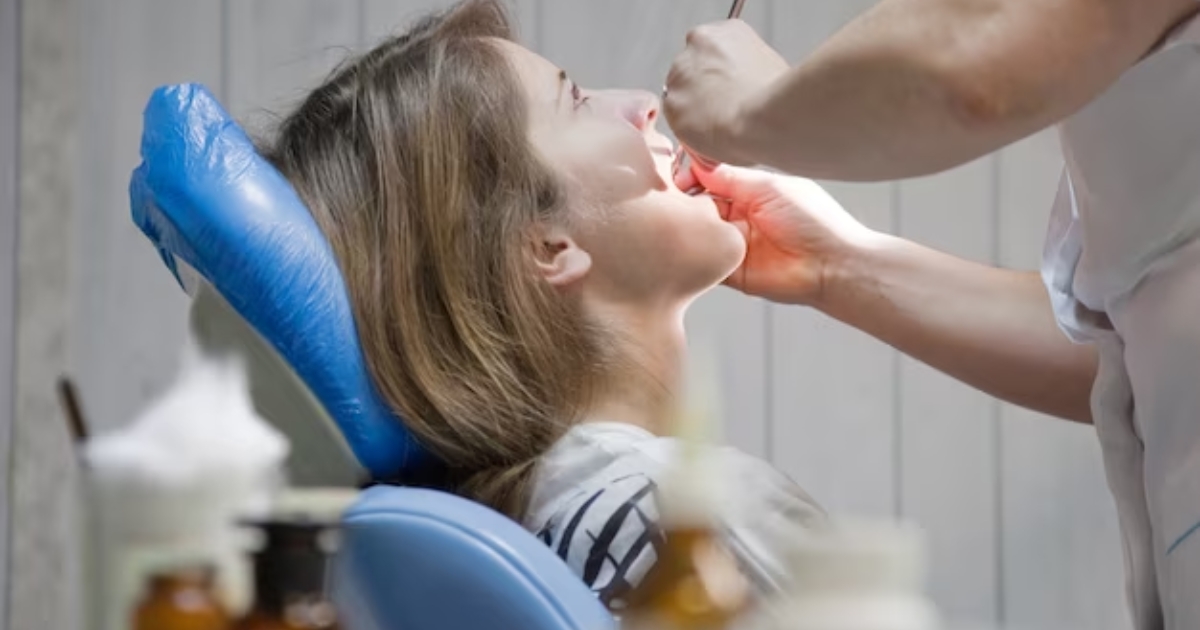Can Wisdom Teeth Removal Correct Crowding And Improve Your Smile?

Smiling is a universal language that transcends barriers, but not everyone feels confident about their smile. One common concern is dental crowding, where teeth overlap or are misaligned. If you’re contemplating wisdom teeth removal or facing issues with crowding, you might be wondering: Can wisdom teeth removal correct crowding and enhance your smile? Let’s embark on a journey through dental science to unravel the connection between wisdom teeth, crowding, and the pursuit of a perfect smile.
Understanding Wisdom Teeth
Wisdom teeth, also known as third molars, typically emerge in the late teens or early twenties. They were essential for our ancestors who had a tougher diet, but as our diets evolved, our jaws became smaller. Consequently, many people experience issues when their wisdom teeth begin to emerge.
Potential Issues with Wisdom Teeth
Wisdom teeth, the third set of molars that typically make their appearance in late adolescence or early adulthood, can be a source of both curiosity and concern. While they were essential for our ancestors with a tougher diet, our dietary evolution and jaw size reduction have led to various complications associated with these late-blooming molars. Let’s delve into the potential issues that may arise with wisdom teeth.
Impaction
Impaction occurs when the wisdom teeth don’t fully emerge from the gums or only partially break through. This is a common issue due to the limited space in the jaw and the relatively late arrival of these molars. Impacted wisdom teeth can lead to a host of problems, including:
- Pain and Discomfort: Partially erupted wisdom teeth can cause pain and discomfort, especially when chewing or biting down.
- Swelling and Inflammation: The surrounding gum tissue may become swollen and inflamed, contributing to further discomfort.
- Increased Infection Risk: The partial emergence of wisdom teeth creates an opening for bacteria, increasing the risk of infection in the surrounding tissue.
Misalignment
Wisdom teeth are notorious for their unpredictable growth patterns. They may emerge at odd angles or in misaligned positions, potentially causing disruptions in the existing dental alignment. Misaligned wisdom teeth can result in the following:
- Bite Irregularities: The emergence of wisdom teeth at unusual angles can affect your bite, leading to discomfort and difficulty in chewing.
- Neighboring Tooth Displacement: Misaligned wisdom teeth may push against adjacent teeth, causing them to shift out of their proper positions.
- Increased Risk of Decay: Misaligned wisdom teeth can create hard-to-reach areas, making proper oral hygiene challenging and increasing the risk of decay.
Crowding
The issue of crowding is intimately tied to the emergence of wisdom teeth. As the third molars attempt to find their place in an already occupied dental arch, they can contribute to overcrowding issues:
- Space Constraints: The limited space in the jaw may not accommodate the additional set of molars, leading to crowding issues.
- Pressure on Adjacent Teeth: Wisdom teeth can exert pressure on the nearby teeth, causing them to shift or become misaligned.
- Potential Orthodontic Challenges: The presence of wisdom teeth can complicate ongoing or future orthodontic treatments by hindering the desired movement of teeth.
Wisdom Teeth and Dental Crowding
The emergence of wisdom teeth, also known as third molars, can significantly impact the alignment of the existing teeth, leading to a phenomenon commonly known as dental crowding. Dental crowding occurs when there is insufficient space in the jaw for all the teeth to align correctly.
The Mechanics of Crowding
Limited Space: The human jaw has undergone evolutionary changes, resulting in a reduction in size over time. With this reduction, the available space for teeth has become more limited. Wisdom teeth, arriving later in life, often face the challenge of finding adequate space for eruption.
Misalignment Trigger: Wisdom teeth, even before fully emerging, can act as a catalyst for misalignment. The pressure they exert and the attempt to find space in an already occupied dental arch may cause neighboring teeth to shift, leading to a domino effect of misalignment.
Wisdom Teeth Removal: A Solution for Crowding?
The decision to undergo wisdom teeth removal is often driven by concerns about oral health, but an intriguing aspect of this procedure is its potential impact on dental crowding. While the primary goal of wisdom teeth removal is to prevent and address issues such as impaction, infection, and misalignment, it can inadvertently contribute to alleviating crowding problems.
Preventing Future Issues
Wisdom teeth are often removed before they fully emerge or become problematic. This preventive approach aims to address potential issues before they escalate, including those related to crowding. By extracting the wisdom teeth early, the risk of impaction, infection, and misalignment is significantly reduced.
Creating Space
One of the key mechanisms through which wisdom teeth removal may impact crowding is by creating additional space in the jaw. The absence of third molars eliminates the need for adjacent teeth to make room for emerging wisdom teeth, thereby reducing the overall pressure on neighboring teeth.
Preemptive Intervention
Some dental professionals recommend wisdom teeth removal as a preemptive measure, especially if there are indications of potential crowding. By addressing the issue proactively, individuals may avoid future complications related to misalignment and overcrowding.
Can Wisdom Teeth Removal Improve Your Smile?
Beyond oral health, the impact of wisdom teeth removal on the aesthetics of your smile is worth exploring. With the removal of wisdom teeth, existing teeth might naturally shift into a more aligned position. Removing wisdom teeth can mitigate the risk of overcrowding, contributing to a more balanced and aesthetically pleasing smile. Orthodontic treatments, such as braces or aligners, may be more effective after wisdom teeth removal, as there is more space for teeth to move into their desired positions.
The Decision-Making Process
Deciding whether to remove wisdom teeth involves considering various factors, including their current state, potential impact on oral health, and the presence of crowding. A thorough examination by a Katy family dentist or oral surgeon is crucial to assess the condition of your wisdom teeth and their potential impact on crowding. Advanced imaging techniques, such as X-rays, help visualize the position of wisdom teeth and their relation to neighboring teeth. Based on the assessment, professionals can provide personalized advice on whether wisdom teeth removal is necessary and how it might impact dental crowding.
While wisdom teeth removal primarily addresses oral health concerns, the ripple effect on the alignment and aesthetics of your smile adds an intriguing dimension to the decision-making process. Consider consulting with a dental professional to evaluate your unique situation. Whether it’s preventing future issues, addressing existing crowding, or unlocking the potential for a more beautiful smile, wisdom teeth removal might be the key to unveiling your most confident self. In the pursuit of dental well-being and an aesthetically pleasing smile, the removal of wisdom teeth could be a transformative step. Embrace the journey toward a healthier, aligned, and more beautiful smile—one that reflects the confidence within.






